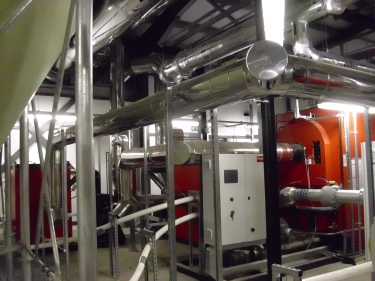Trying to join up the dots of European legislation

A lack of joined up thinking in the Ecodesign requirements for different types of boilers is likely to cause confusion for specifiers and their end clients, in terms of understanding energy performance and emissions. Ross Anderson explains.
For many years the commercial and industrial heating industry has been involved in an evolutionary process of product design in response to changing regulations and standards. In particular, these efforts have been directed at improving energy efficiency and reducing emissions, with a view to both maximising the performance of the products while also gaining commercial advantage over competitors. In effect, the requirements of end-users and their specifiers have driven ongoing product improvement, ultimately to the benefit of all concerned.
More recently though, politicians, particularly the European Commission, have become involved in this process. This involvement has resulted in the Energy Related Products Directive (ErP). Under this directive sits the Ecodesign requirements for energy-related products.
On the face of it, this shouldn’t be a problem as it is designed to ensure that products continue to improve and that manufacturers are required to comply with a standardised set of performance standards. Sadly, this isn’t the case at the moment; to understand how this could impact on specifiers it’s important to understand how the scheme works.
Ecodesign has a number of sections, known as Lots, each of which has a fairly broad scope. In terms of industrial and commercial boilers there are three Lots that are particularly relevant.
• Lot 1 covers the Ecodesign requirements for space heaters and combination heaters, which refers to boilers up to 400 kW operating on gas and oil fuels. This Lot does not cover solid fuel/biomass boilers. Lot 1 has passed through the regulatory process and now been published.
• Lot 7 relates to steam boilers. Its scope covers most steam-raising devices from coffee machines to large steam-raising plant. This Lot is in its early stages prior to the proposed regulations being put out for public comment.
• Lot 15 covers solid fuel/biomass boilers up to 500 kW. Initial working documents have been issued and comments submitted to the European commission regarding the content.
In parallel, boiler manufacturers at the larger end of the scale will have to comply with a separate Directive called the Medium Combustion Plant Directive. This is at draft stage and encompasses boilers from 1 to 50 MW covering all fuels including gas, oil and biomass.
Within these Ecodesign requirements are some contradictions that could result in the confusion referred to above. For example, the original draft document for Lot 15 had a scope up to 1 MW but this was reduced to 500 kW in a subsequent draft, to fall in line with the current standard — EN303. This clearly leaves a gap between the 400 kW gas- and oil-fired boilers and 500 kW solid fuel boilers covered under Lots 1 and 15, respectively, and the 1 MW boilers of all of fuel types covered by the Medium Combustion Plant Directive.
This could potentially encourage specifiers — or contractors during a re-engineering exercise — to opt for less efficient boilers in the range between 400 KW and 1 MW as these will only have to meet existing regulations. Similarly, if the specification is for a 1.2 MW boiler it would fall within the remit of the Medium Combustion Plant Directive, whereas two 600 kW boilers would not be covered by the new regulations.

As well as relating to efficiency, the Ecodesign requirements also set limits for emissions. In the case of solid-fuel boilers that come under Lot 15, emissions levels are at such a low level that current designs will find it very difficult to comply. For example, to ensure that biomass boilers meet particulate matter (PM) levels, the most effective solution will be to add filters in the flue outlet on the boiler. These will require more plant room space and add to overall costs.
As well as presenting a confusing scenario for specifiers, this current situation poses some key challenges for manufacturers.
A manufacturer with a range of gas and/or oil fired commercial boilers is in the position that there are regulations in place covering outputs up to 400 kW with a known deadline for compliance (26 September 2015).
Other sections of the scope have a longer timescale, to 2017.
However, if the range is above 1 MW then those boilers will come under the Medium Combustion Plant Directive; at this stage the date of conformity has not been finalised. And, of course, what happens to those boilers between 400 kW and 1 MW?
So that’s the situation with the EC regulations.
The only real non-EC change in the UK has been the introduction of the non-domestic RHI. This is designed to stimulate use of renewables and has been quite limited, except for its promotion of biomass boilers. But at least the UK Government is using a positive incentive for biomass boilers and is demonstrating a level of joined up thinking; it’s a pity that the European Commission is not joining up its thoughts.
Ross Anderson is Director of the Industrial & Commercial Energy Association (ICOM).








